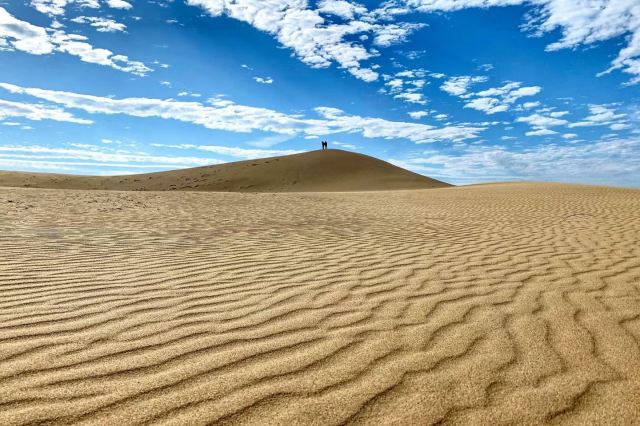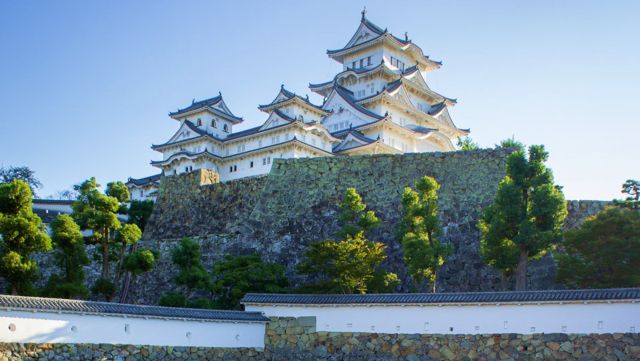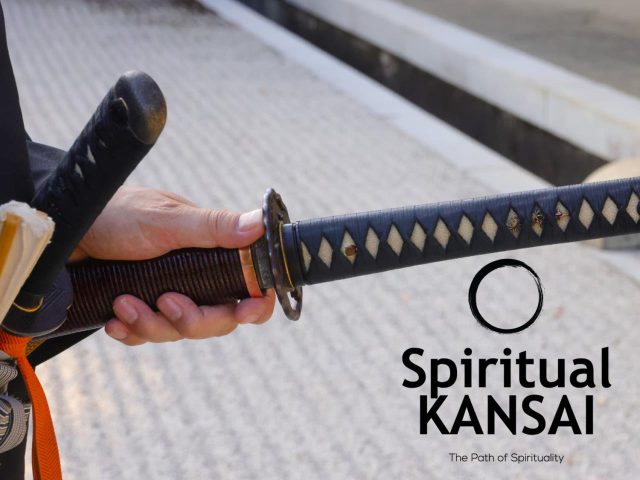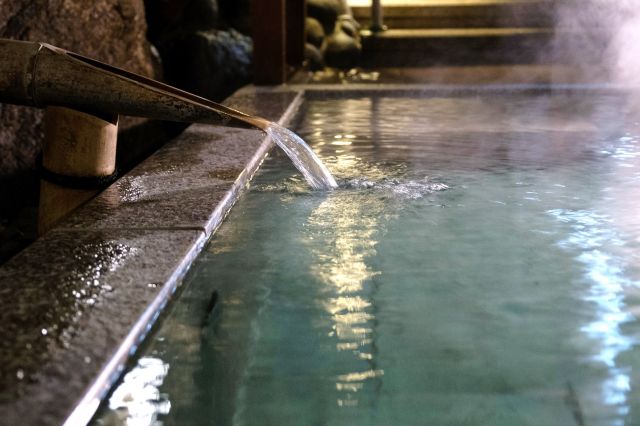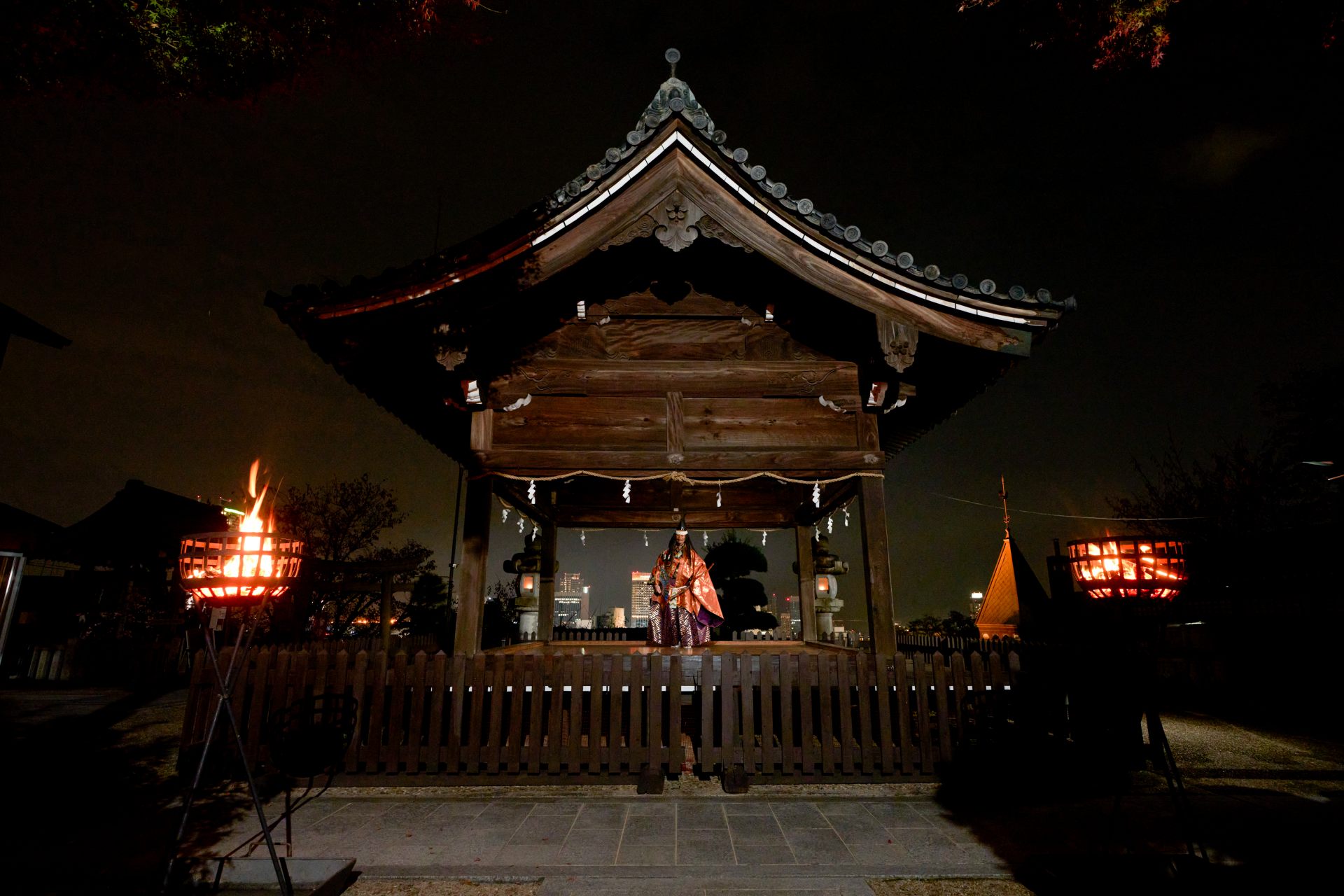
Private Evening Showing of Takigi Noh at “the shrine in the sky”, Against the Kobe Cityscape
31 Jan 2022
Kobe is the beloved port city in Hyogo Prefecture that’s known across the globe. The city pioneered much of Japan’s first contacts with the world, fostering a long-lasting flair for new culture and imports. Japanese locals today know it for its “trendy, global-chic” vibes, but haven’t forgotten the city’s deep cultural heritage and penchant for ancient tradition.
This exclusive expedition into Kobe’s rich culture will bring you to a fully charted, firelit performance of Takigi Noh, set against a million dollar view of Kobe’s night sky. This live art performance is set on the stage of “the shrine in the sky”, a shrine that’s watched over the city from its perch in the clouds for over 800 years. As the fire crackles and song begins to fill the night air, you’ll find yourself lost as the famous Yoshiteru Ueda, an up-and-coming Noh performer, brings the mystical tale of the Genpei War to life before your eyes. Watch and keep a close ear out for the inner dialogue, a key piece of communication in the eyes of Ueda, which will serve as your guide as you step deeper into the inseparable ties of Kobe and its heritage of Noh.
Kitano Tenman Shrine: called “the shrine in the sky”, with roots in the Taira Clan.
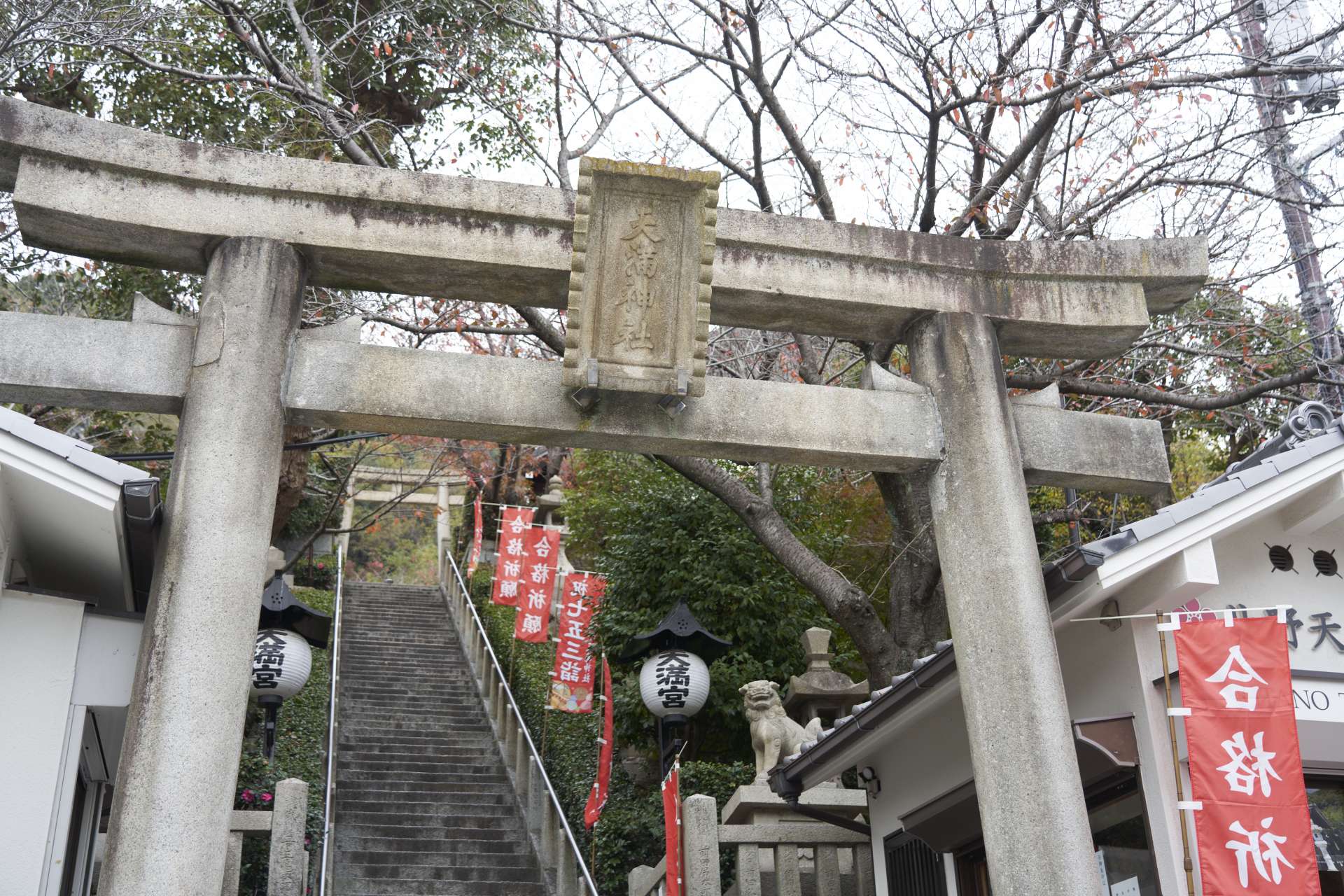
Nearly 840 years have passed since the shrines founding by Taira no Kiyomori. It continues to protect Kobe from its high perch.
To start, you’ll make your way to Kobe Kitano Ijinkan-Gai, the expansive townscape just steps up the slope from the center of Kobe. While the cosmopolitan, global influences of today are undeniable, the area will suddenly give way to a shrine that’s brimming with authentic Japanese essence. Welcome to Kitano Tenman Shrine, your destination on this trip.
The shrine was founded during the Heian period when Japan’s political seat was relocated by Taira no Kiyomori from Kyoto to the Kobe/Fukuhara area in 1180. At this time, it was created to take on the Kitano Tenmangu Shrine in Kyoto and the role of protecting the imperial residence in the new location of Kobe. Today, many enthusiasts of art and scholarship visit this destination as it is said to enshrine Sugawara no Michizane, the Shinto god of learning. As its nickname “the shrine in the sky” would suggest, its towering location above the city boasts breathtaking views of the area and bay waters below.
At the center of the shrine’s grounds you’ll find a portal into the arts and the heart of Japan’s oldest form of Noh Theater in this highly stylized, one-of-a-kind experience. In a hall of worship, built in 1742, you’ll find yourself lost as the newest face in this ancient art brings the authentic works of Noh to you.
Yoshiteru Ueda, the Acclaimed, Up-and-Coming Performer from the Exclusive Kanze School of Noh
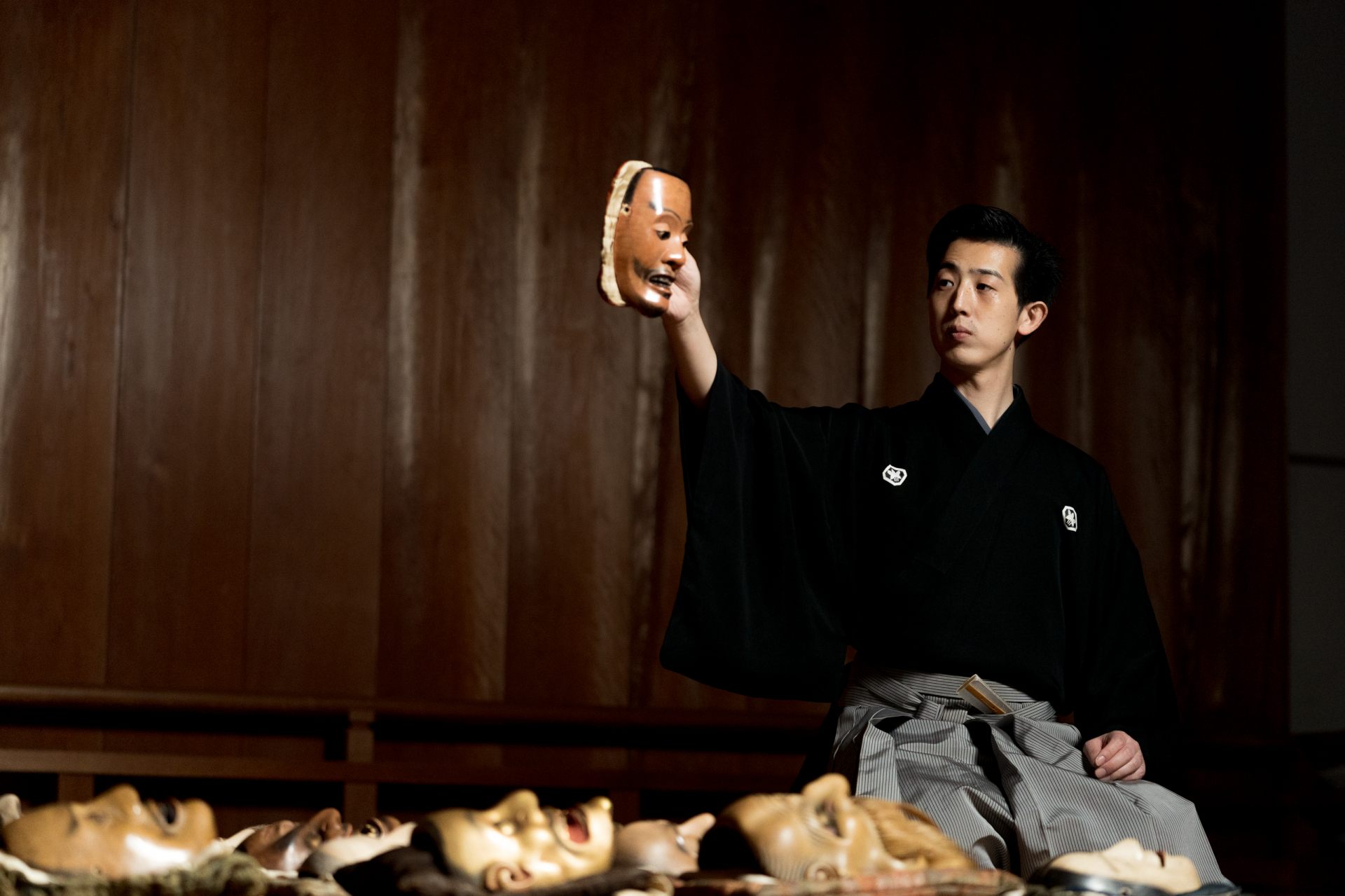
Yoshiteru Ueda, from the Kanze school of shite-kata (main character/choral) Noh performers.
Sharing the culture and draw of Noh as a young successor of the traditional performing arts.
This artful experience at the “the shrine in the sky” centers on a private performance of Noh theatre, headed by Kobe’s own Yoshiteru Ueda from the illustrious Kanze school of shite-kata performers. At the age of only 33, Ueda has garnered global acclaim as one of the young artists carrying the heart of Noh theatre into the next generation.
Ueda is an actor of the Kanze school of Noh, founded by Kan'ami, the “Father of Noh” and home to the greatest of all 5 shite-kata schools in Japan. Historically, this school was treated preferentially by the Muromachi shogunate, and in the Edo period it kept this level of prestige as the highest among four seats protected by the Shogunate.
While embracing revered, historic traditions, Ueda continues to blend tea ceremony and other new elements into his performances, providing a new spin that still resonates in the present day. While boasted as the new face of Noh theatre, Ueda personally enjoys the chance to convey and share his works through the means of mutual understanding and inner dialogue.
“I dedicated myself to exploring the long history and traditions of Noh performers before me, striving to understand their thoughts, method and message. It’s almost like I’m speaking with my predecessors in my heart. For those of you in the audience seat, I want you to watch with an open heart, and let the performance speak to your spirit. When it’s over, I hope you start a dialogue of your own and share what you felt with those around you. I’m sure this will draw you even closer to the heart and soul of Noh”.
A Kobe-styled Quiver, Based on the Battle at Ikuta no Mori during the Genpei War
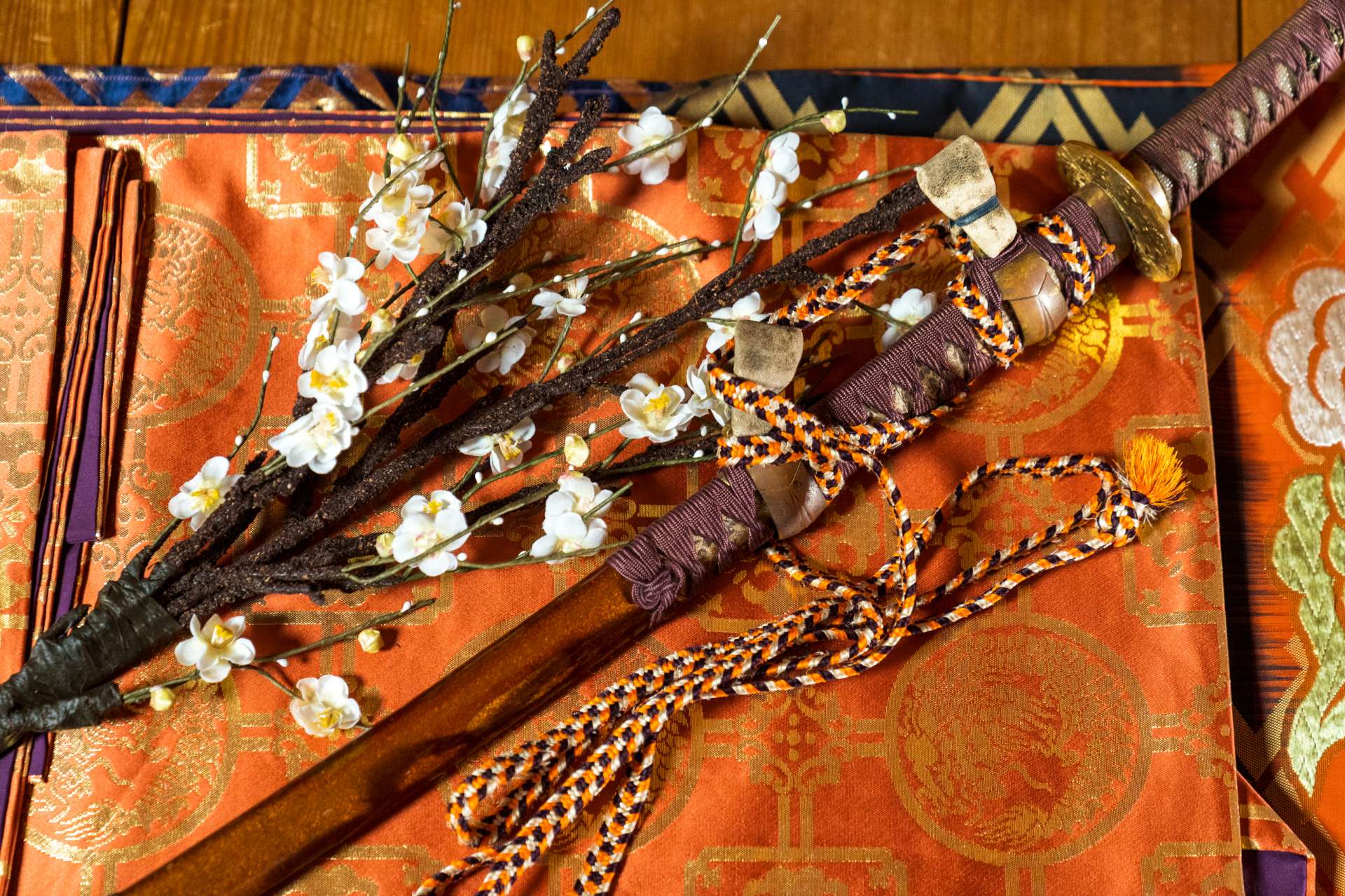
A small purse fashioned with a motif of plums and swords from the Ikuta no Mori quiver. It serves a significant role in the tale of the quiver in the Tale of the Heike.
Your completely chartered performance at Kitano Tenman Shrine is “Ebira”, (eng. “Quiver”), a story centered on the quiver of arrows worn across a warrior’s back. This particular tale was selected as the favorite of many when Noh became the preferred form of the shogunate’s entertainment in the Edo period.
“A group of monks arrive at Ikuta no Mori just as the plum trees have come into bloom. They stop to admire the new blossoms and rest when a man appears before them. He tells them that the blooms are Ebira no Ume (Ebira Plumblossoms), a tree associated with the Genpei Wars. He goes on to explain the legend of Kajiwara Genta Kagesue, the legend who placed a plum tree branch into his quiver before going out to battle. The man then reveals that he is the ghost of Kagesue and disappears. That night, the monks see a young warrior spirit of Kagesue appears in their dreams. He carries the heavy weight of Asura, a separate realm where war and fighting never end, who then shows the events of the Genpei War that had once unfolded at the same spot. Finally, he asks the monks to pray and finally disappears”.
This performance continues to tell the same tale of young warriors from the Minamoto and Taira clans who carried a plum tree branch in their quivers.
The setting of the story, Ikuta no Mori, is located just steps down the slope from the present-day Kitano area. Today you can still find plum trees that once filled their quivers that now bend under the weight of beautiful blossoms.
This truly local play takes root in the deep history and happenings of the Kobe area. As you watch you become part of that same story, able to enjoy the rare chance to walk through the world of the tale itself.
The Kobe Night Sky and the Mystical Dancing Flame of the Bonfire
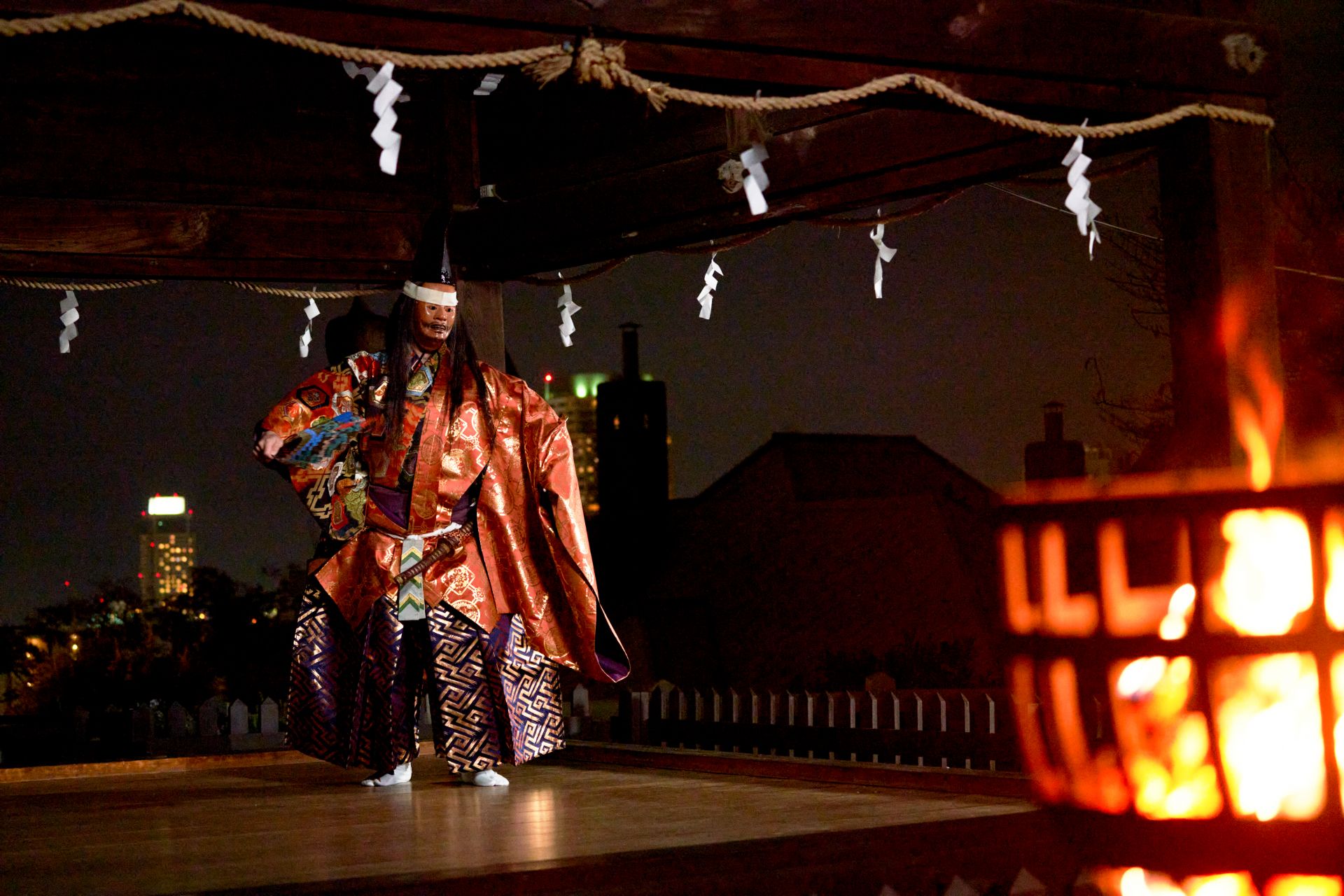
Yoshiteru dancing on stage with nothing but the light of the crackling bonfire and the distant Kobe night sky. Witness the magic and beauty.
Feast your eyes on a private, stylized play that tells the tales of the Genpei War from inside the reaches of the Kitano Tenman Shrine. The experience will open to you after all visitors have left the shrine grounds, offering an utterly private moment at the “the shrine in the sky” to take in the million dollar view atop Kobe’s night sky. Before the performance, the view alone will leave you entranced. Yet watch as the mystic stage area closes in around you with the lighting of crackling bonfires around the stage’s edge. This form of theatre art is known as Takigi Noh, the oldest form of Noh still performed that first began during the Heian period. The mountain and bay breezes pull at the licking flames, giving the quintessentially magical ambiance that’s boasted by Takigi Noh. Take in the ethereal beauty that can only be recreated by the natural elements.
A private show of Ebira, by the acclaimed Yoshiteru Ueda and a breathtaking backdrop of Kobe’s night sky. While some 800 years have passed since the Genpei Wars, the thoughts, feelings and inner dialogue are sure to resonate from the performance as it unfolds. Delight yourself in a moment of wonder as the stories of the young warrior and the young performer come alive through the lens of Takigi Noh.
